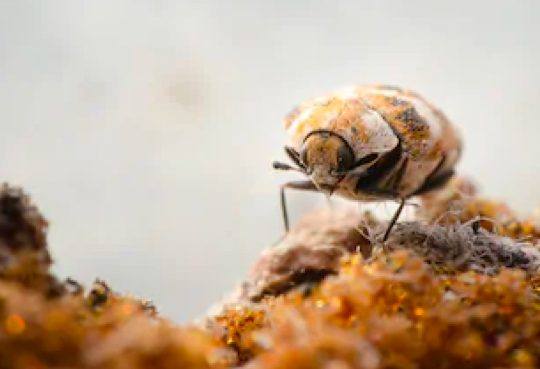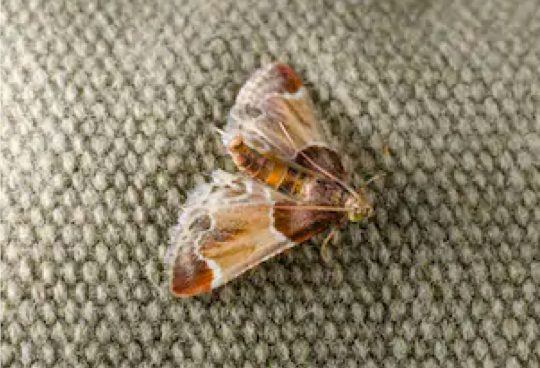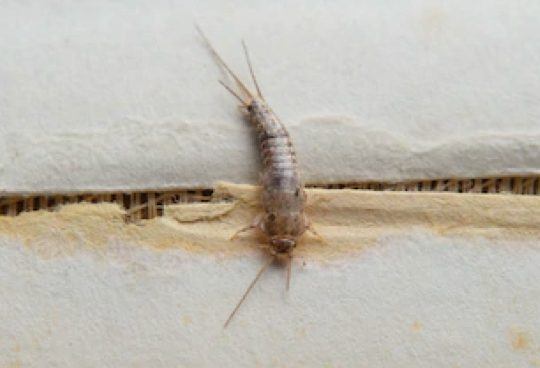Fabric and Textile Pests
Fabric and Textile pests are insects that damage fabric and paper products. The three main fabric pests we deal with on a daily basis include silverfish, clothes moths and carpet beetles.
Carpet Beetle
Carpet Beetles are small and oval in shape. The adult beetles feed on pollen while the larvae feed on a wide range of animal-based items, including silk, leather, fur, wool and animal hair. As a result, carpet beetles may infest carpets, upholstered furniture, blankets, coats, comforters, wool, pillows and clothing. While carpet beetles rarely attack synthetic fabrics, they may feed on these items when they are soiled by perspiration, oil or food. Carpet beetle infestations can spread quickly.
Carpet beetles enter homes through doors, windows and other openings, although they may be brought in on fresh cut plants and flowers, as well. Some carpet beetles make their homes inside the nests of birds or other animals and can live in walls cavities and roof voids.
Both the adults and larvae stage prefer to feed in dark, undisturbed areas. As a result of this an infestation can go unnoticed until it is widespread.

Silverfish
Silverfish prefer damp, dark, warm and humid places to harbor. Because of this they are often found in bathrooms, kitchens, roof voids, wall cavities, cupboards and bookshelves.
Outdoors, they may be found living under the bark of trees and garden beds, under rocks, in rotten logs and among leaf litter.
Homeowners most commonly detect silverfish when they find one on the floor or in a sink/bathtub, or they will find holes in their clothing.
Clothes Moth
Clothes moth consumes wool, fur, silk and hair. If left untreated, clothes moth infestations can decimate entire wardrobes. Clothes moths should not be confused with stored product pest or food infesting moths. Clothes moths prefer the cover of darkness and do not typically fly to lights.
The most visible and easy to identify clothes moths are the males, as the females are weak fliers and prefer to hop or run. Female clothes moths tend to die soon after laying eggs, which they attach to their preferred fabrics. This results in the larval stage being responsible for damage caused to clothing.


